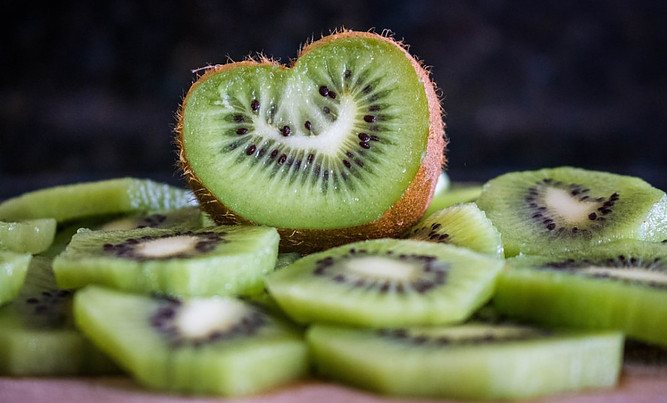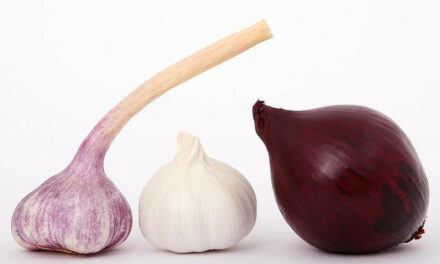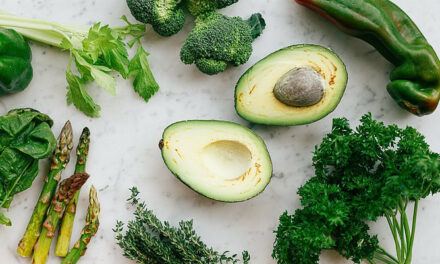In this article, we’ll explore the health impacts of the Kiwi fruit overall, and especially on Type 2 Diabetes. Is kiwi good for diabetics?
Let’s find out after understanding diabetes and kiwi fruit better…
What is Diabetes?
According to the WHO, Diabetes is a chronic disease that occurs either when the pancreas does not produce enough insulin or when the body cannot effectively use the insulin it produces. The mentioned hormone, insulin, is responsible for regulating blood sugar levels. There are two types of Diabetes, Type 1 and Type 2 Diabetes.
In this article, we’ll talk about the latter, a more common one. Type 2 diabetes (or non-insulin-dependent, adult-onset) occurs when the body is ineffective in using insulin. It is mainly the result of lifestyle, excess body weight or physical inactivity.
When speaking of the long-term consequences of type 2 diabetes, it can damage the heart, blood vessels, eyes, kidneys, and nerves. Still, it’s easily preventable (or postponed) by ensuring you’re leading an active and healthy lifestyle. It is easily monitored and diagnosed through blood sugar testing.
Now let’s turn on to kiwi fruit…
Firstly, let’s cover about the Kiwi fruit in general, its nutritional value, its benefits, and finally, a list of some easy Kiwi snacks for everyone to try and make. After all, Kiwi is a beloved fruit not only reserved for people with Type 2 Diabetes.
But, the question is whether kiwi fruit good for people with diabetes…
What is Kiwi Fruit?
Kiwi fruit is the edible fruit of Actinidia Deliciosa order and hybrids between this and other species in the genus Actinidia.
It is easy to recognize thanks to its peculiar appearance. Hairy brown peel covers the green insides of sweet taste that many describe being a mixture of banana, pineapple, and strawberry.
In the center of the fruit is white pulp surrounded by black seeds. These seeds are actually edible and highly nutritious, with some health benefits as well.
For instance, it contains alpha-linolenic acid, which helps in the development of the brain and improves heart health.
The seeds contain fibers, that may help lower the risk of high cholesterol, hemorrhoids, constipation, heart disease, and diverticulosis. But, more about the nutrition value of the Kiwi fruit a little later.
Now let’s say something about the interesting history of the Kiwi fruit.
The History of Kiwi Fruit
The Kiwi fruit has a fairly recent history. In 1904, schoolteacher Isabel Frasier introduced the fruit to New Zealand, where it got the name it has now – “kiwi” after their national bird of New Zealand.
They first made their appearance in Southern China, where they were known as Yang Tao (sunny peach) or Mihou Tao (macaque peach), and they still are considered China’s national fruit.
Around the 1960s, they got the nickname “Chinese gooseberries” because they resemble the fruit of the same name, but they’re in no way related to gooseberries.
What is in a Kiwi Fruit?
Here is a table view of a kiwi fruit’s nutrition value per 100 grams of fresh, raw kiwi fruit.
|
Nutrient |
Value |
|
Energy |
61 kcal |
|
Sugars |
8.99 gram |
|
Total Fats |
0.52 gram |
|
Carbohydrates |
14.66 gram |
|
Cholesterol |
0 mg |
|
Dietary Fibres |
3.0 gram |
|
Protein |
1.14 gram |
|
Thiamine (Vitamin B1) |
0.027 gram |
|
Lutein and zeaxanthin |
122 μg |
|
Riboflavin (Vitamin B2) |
0.025 mg |
|
Vitamin B6 |
0.63 mg |
|
Niacin (Vitamin B3) |
0.341 mg |
|
Folate (Vitamin B9) |
25 μg |
|
Vitamin A |
87 IU |
|
Vitamin K |
40.3 μg |
|
Vitamin E |
1.5 mg |
|
Vitamin C |
92.7 mg |
|
Iron |
0.31 mg |
|
Calcium |
34 mg |
|
Copper |
0.130 mg |
|
Phosphorus |
34 mg |
|
Zing |
0.14 mg |
|
Manganese |
0.098 mg |
|
Magnesium |
17 mg |
|
Potassium |
312 mg |
|
Sodium |
3 mg |
|
Carotene-ß |
52 μg |
|
Crypto-xanthin-ß |
0 μg |
|
Lutein-zeaxanthin |
122 μg |
Is Kiwi a Low Glycaemic Fruit?
Low Glycaemic food is food that will raise a person’s blood sugar levels slower than food with or moderate or high scores on the glycaemic index.
The official definition of the glycemic index (or GI) is a ranking of carbohydrates on a scale from 0 to 100 according to the extent to which they raise blood sugar (glucose) levels after eating.
This index is calculated by feeding approximately 10 healthy people some food containing 50 grams of digestible (available) carbohydrates and then measuring the effect on their blood glucose levels over the next two hours.
There are three levels on the scale:
- Low-GI food with an index under 55,
- Medium-GI food with an index from 55-70, and
- High-GI food with an index above 70.
Not only is it advised for people with Type 1 and Type 2 Diabetes to use the GI or GL as part of the nutritional management of their condition, but the scale is also valuable for weight maintenance and cholesterol control.
With its GI score of 50, Kiwi is on the low-GI food list, which makes it one of the healthiest choices from the list of fruits.
Health Benefits of Kiwi Fruit
Besides the previously mentioned health benefits of the kiwi seeds, here are some more benefits of eating kiwi fruits, especially for people who have diabetes.
- High in Vitamin C
Vitamin C contributes to the production of collagen, which is a key component in maintaining your skin youthful and healthy. It also boosts your body’s ability to heal wounds.
A kiwi weighing 69 grams provides 69mg of Vitamin C, which is 71-85% of our daily requirement.
- Help sleep
Kiwi contains antioxidants and serotonin, which improve sleep onset, duration, and efficiency, as discovered by a study conducted in 2011. This discovery may also help people with sleep problems and disorders.
- Kiwi contains fiber, potassium, and antioxidants that help with heart health.
Potassium helps to prevent cardiovascular disease.
One kiwi contains approximately 215 mg of potassium, which is 5% daily human needs, and 2g of fiber, which is 6-9% of daily human needs.
- Help prevent cancers
Rich in antioxidants, kiwis help remove free radicals from the body, which long-term may prevent cancer.
According to a 2015 study, individuals with the highest fiber intake have less risk of developing cancer.
- Help with constipation
A 2019 study suggests that kiwi consumption correlated with the increase in stool frequency and looser stool consistencies, which means that kiwis could be used as a dietary alternative to laxatives in mild constipation.
- Have anti-inflammatory properties
Kiwi fruits contain kiwellin and kissper that have been discovered as anti-inflammatory and anti-oxidant.
- Help fetal growth
As a provider of folate, kiwi is recommended in pregnancies, as folate protects the fetus from developmental problems.
One kiwi contains approximately 17.2 mcg of folate, which 4% of the daily requirement.
- Improve bone health
Kiwi contains vitamin K, calcium, and phosphorus, all of which contribute to bone health. It can help prevent osteoporosis.
One kiwi provides 20-30% of the daily requirements of vitamin K, which is also very valuable for blood clotting.
Why is Kiwi Fruit for Diabetics?
As mentioned already, kiwi stands low on the GI scale, way below the dangerous levels of 70. This means it doesn’t cause blood glucose levels to rise rapidly, and it makes kiwi the perfect food for most diabetics.
Here are some additional reasons. Of course, the reasons stated above are equally beneficial to people with and without diabetes.
- It is low in calories and low in fat
This is great when trying to maintain a stable weight, as we know there’s a correlation between body weight and diabetes, especially type 2 diabetes.
- Kiwi is high in fiber
This helps in the slow absorption of glucose in the body as well as the release of glucose in the bloodstream.
- Promote gut health
Disorders of the digestive tract are common in people with diabetes, and kiwi fruit helps smoothen that process.
- Promote blood health
Kiwi helps to reduce the risks of blood clotting, and heart-related conditions are common in people with diabetes.
How Can Kiwi Fruit Help Regulate Blood Glucose?
Glucose is a simple sugar type that the body uses to provide its cells with the necessary energy. Our bodies usually maintain healthy levels themselves, and people with diabetes use insulin to do so.
People with type 1 diabetes always must take insulin as their bodies don’t produce it. In contrast, people with type 2 diabetes can regulate it without insulin, depending on the severity of their illness. There’s a direct correlation between diabetes and glucose, or glucose tolerance to be exact.
As already mentioned, higher body weight can increase the chances of diabetes, which is again in correlation with the glucose that in large sums increases body weight.
Research studies suggest that any form of sugar could increase the risk of diabetes.
Kiwi boosts the sensitivity of insulin in the system, which helps with the absorption of glucose in the cells, and it all together helps control blood sugar. Thanks to flavonoids and carotenoids, kiwi can act as an antioxidant and protect DNA from oxygen damage. And, thanks to the low GI, kiwi can balance blood sugar levels.
Can Kiwi Spike Blood Sugars?
Sugar from food can spike your blood glucose levels. Fruits are especially at fault for that, to the point people with diabetes are advised against eating bananas or apples, for example.
Kiwi, on the other hand, has negligible fructose content (around 7 grams, which is incomparable to the levels most fruits have) and a low GI of approximately 50, so it’s completely safe to eat.
In fact, people with diabetes are advised to eat whole fruits, and kiwi is one of the best choices thanks to its sugar that are easy to break. It is considered a great alternative to other tropical fruits that have much larger sugar levels than kiwi.
Among other advised fruits are strawberries, raspberries, avocados, cherries, and grapes.
How Many Kiwis Should a Diabetic Eat a Day?
Because of the negligible fructose content (around 7 -8 grams), there is no need to separate diabetics and non-diabetics when speaking on this topic.
You might think that sugars from the fruit are bad, but the reality is that the sugar in whole fruit does not count as free sugars, so it is not this type of sugar we need to avoid, contrary to free sugar in drinks, chocolate, cakes, honey, and juices.
It’s constantly talked about how people don’t eat enough fruit, so you shouldn’t by any means cut down on the fruit that you intake, mainly because they don’t contain free sugars and aren’t unhealthy.
Recent researches have shown that eating about two kiwis a day should be the norm. In the research, the group of people that ate two kiwis a day showed less fatigue and depression
and more energy than the group that ate half a kiwi a day.
What is the Best Time to Eat a Kiwi Fruit?
When speaking of seasons of the year, kiwi fruits grow to their full size in August, but it is mature enough to be harvested only in late October or early November when the seeds are black, and sugar levels are high enough.
Unlike some other fruits, kiwis will only start to rip after they’re removed from their vine. In addition, ripe kiwis aren’t the best at storing
When speaking of the times of the day, the best times to eat fruit, including kiwi fruit, would be in the morning, as a snack, and before and after exercise. Here’s why…
The best time to eat fruits is the morning because then you add the fruit into an empty stomach. Eating it when you have an empty tummy means your digestive system will break down the fruit’s sugar quickly and provide your body with full nutritional perks.
Furthermore, eating fruits in between meals and as a snack is a healthy change from the usual snack foods like chips and sweets. They are low in calories and high in minerals, which makes them a great tool to aid you in your weight loss journey.
And, eating fruit before or after working out is the best way to provide your body with instant energy too.
Should a Diabetic Eat a Kiwi Fruit Skin?
The whole kiwi fruit is edible, including the seeds (benefits of which have already been described) and the skin. It’s a personal preference of many people to peel the skin, as the fuzzy texture can be repulsive to some.
The kiwi fruit skin is a great source of fiber, folate and vitamin E. The concentration of antioxidants is also higher in the skin than in the flesh of the kiwi fruit.
People who can’t eat kiwi skin include people with a strong aversion to the texture of the skin, and also people who are allergic to kiwi.
Let’s check out kiwi allergies now…
Most common symptoms include abdominal symptoms such as nausea or vomiting, respiratory symptoms or skin symptoms like itching, rashes, redness or even hives, oral symptoms like swelling of the tongue, or even anaphylaxis.
In any of these cases, it is important to visit a doctor as soon as possible and test for kiwi allergy.
This video explains how to peel a kiwi fruit.
Diabetic Friendly Kiwi Snack Recipes
Kiwi can be prepared and eaten in many ways, from jams, cakes, ice creams, and many other sweet, dessert recipes. It is even used in cooking meat dishes, as it gives a tinge of tangy taste to the meat. Kiwis can also be made into wine.
One of the most famous ways of eating kiwi for diabetics is by blending it with other fruits and making a delicious and healthy smoothie. You can never go wrong with that.
Kiwi, alongside other fruits, can be made into a yummy fruit salad that can be eaten along with yogurt or oatmeal.
With children as well as adults are popular fruit popsicles, where blended fruit is put into popsicle moulds and left to freeze a couple of hours.
Conclusion
With a GI score of 50, Kiwi is on the low-GI food list and one of the healthiest fruits a person with diabetes could choose. It has many benefits, including respiratory health, cardiovascular health, keeping skin youthful, and many more. It is even advised for pregnancies.
Eating kiwi fruits will not spike your blood sugar levels – right the contrary, it can help regulate blood glucose levels. This is important since there’s a correlation between body weight and diabetes.
The whole fruit, including the skin and seeds, is edible, and many delicious snacks could be made from kiwi.
It is advised to eat 2 kiwis a day, so make sure to incorporate some of the delicious kiwi snacks into your daily routine, as a morning snack or snack in between meals and workouts.










